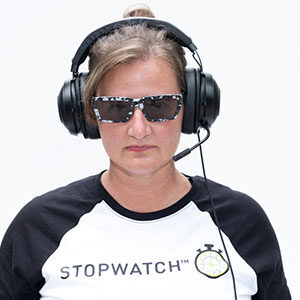Nothing ever happens in isolation in the world of ecommerce. Yet even the largest CPG and distribution companies still rely on lag analytics and siloed information to get a handle on what’s being sold where, to whom and for how much.
In today’s world of constantly shifting consumer patterns, CPG and retail challenges include freight and shipping limitations, unexpected shortages of products and raw materials and even viral TikTok videos. The bottom line: Making decisions on pricing, distribution and product mix by looking at what’s already happened won’t cut it.
Factors impacting sales, pricing and distribution, along with product mix and placement, have always been tenuous. In today’s environment, making effective and profitable decisions is part science and part art. It’s a little like a symphony orchestra in which the bassoon player unexpectedly plays a riff from Blackpink in the middle of a Mozart concerto.
Even a moderately-sized CPG brand may create and distribute thousands of SKUs across hundreds of brick-and-mortar and ecommerce outlets. And the traditional model tends to not only focus on lag data, but it also tends to be heavily siloed. Thus, while one analyst may have a solid understanding of what’s being sold and in what quantities at Walmart, and another analyst the same for Amazon.com, the real magic happens when they can break through their silos and share information.
This would allow for example, management to better understand how decisions in the Amazon channel may impact sales at Walmart.com and vice versa. It can also surface how an unexpected influencer suddenly drives sales at another online outlet and takes away conversions from the others. This is the orchestral part of maximizing commerce. Think of it as the butterfly effect of the CPG world.
Best practices mean moving towards a single dashboard with all data, from all retail outlets, with everything visible in real time. Unfortunately, traditional ERP technology, which most CPG manufacturers gravitate towards, does nothing of the sort.
Why Lag Analytics Lags Behind
Scorecarding is exactly what it sounds like. It’s a set of metrics that shows the strategic goals of your own business, your channel partners and even your competitors, and how those goals compare with actual results. Traditionally, this has been straightforward, using ERP and other tools to ask, “What did we want to do last quarter? What did we actually do?” But looking at the previous quarter or even the previous week has limited value in the fast-moving world of ecommerce.
Rather, there are two much more relevant questions. Instead of querying “What happened last week,” think “What happened five minutes ago” and “What’s going to happen next?” The problem with lag analytics is, once you understand what happened in the previous weeks and months, it’s often too late to do anything about it.
Every CPG manufacturer and distributor possesses more data than they realize exists, and millions of new data points are generated every day. They pour in from across the retail and distribution spectrum: shipping and freight, inventory and even external sources that may inform decisions based on factors as obscure as unexpected weather patterns. Once you go beyond lag analytics and begin to make use of all your stored data, rather than just isolated portions of it, along with other publicly available data signals and all in real time, market visibility will markedly increase.
The Ecommerce Butterfly Effect
Those often-unpredictable surges, shifts and dips in sales can have an outsized impact. The pandemic, for example, drove more people towards ecommerce. Your competitors’ excess inventory may result in the market being flooded, impacting your own pricing strategy. Macroeconomic factors that may seem out of your control, such as new tariffs or inflationary pressure, impact the cost of raw materials.
Knowing what’s happening today, in real time, at every physical and digital outlet is part of the retail digital transformation, commonly referred to as “omni-commerce.” It’s no longer enough for an analyst to receive multiple, separate reports on each outlet; they need to be all visible at the same time, in real time, and must be interactive to be effective. These interactions provide the analyst with two very important analytics capabilities: first, it provides a unified, 360-degree view of what’s happening everywhere, at every outlet.
And when combined with real-time feeds on a host of other external data, you can really begin to see how everything interacts. You can see for the first time what those legacy ERP systems and look-behind lag analytics systems never could show you.
The Data Is Already There
Why is it then, that CPG companies don’t have that 360-degree view, real-time feedback and the ability to see the symphony of how everything interacts? One big reason, of course, is lack of momentum. Expensive ERP systems become entrenched. A “this is how we do it” mentality takes hold, and a long, complex process is difficult to change. It’s certainly not because the data isn’t there, because it is. It’s just that those entrenched systems don’t make use of it.
The opportunity is right there in front of you, and that unified view is certainly achievable with a more modern approach based in digital transformation and a deeper understanding of the customer journey. That siloed data, along with a reliance on lag analytics, can cause serious problems in a business that demands real-time insights and immediate action.
Lag analytics by nature lead to a reactive approach in which decision-makers detect patterns and problems that have already occurred, and the damage has already been done. A more proactive approach, based on digital transformation, makes all the difference. CPG brands can instead stop those problems before they even have a chance to emerge.
Meagan Bowman is Founder and CEO at Stonehenge Technology Labs

